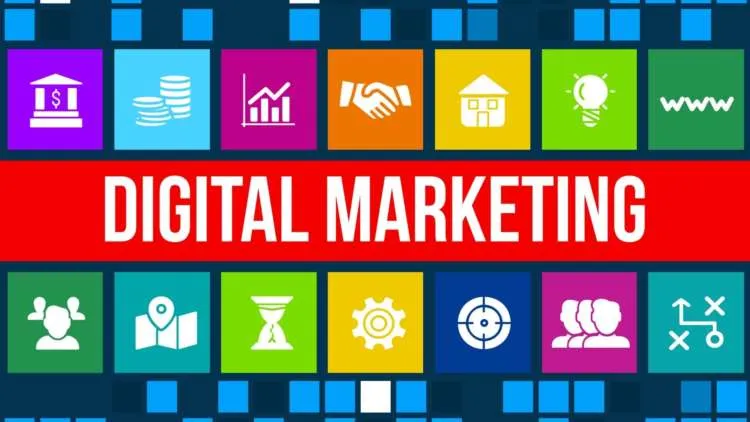Welcome to our exclusive report on the latest trends and insights in the world of artificial intelligence. As we step into the year 2024, the field of AI is set to undergo an unprecedented level of growth and change, with significant developments across sectors such as healthcare, finance, retail, and more. This report aims to provide an in-depth analysis of the emerging trends and innovations in AI, along with insights into the transformative potential of this technology.
Key Takeaways
- The AI industry is projected to experience massive growth and expansion in 2024, with various sectors set to embrace AI technologies to enhance efficiency and productivity.
- Breakthroughs in machine learning algorithms and techniques are set to redefine the way AI systems operate and function, enabling more nuanced and sophisticated data analysis and cognitive abilities.
- The integration of AI with automation and robotics systems has significant implications for enhancing efficiency and precision in sectors ranging from manufacturing and logistics to healthcare.
- Natural language processing technology continues to evolve, fostering more effective communication between humans and machines, with implications for sectors such as customer service, marketing, and more.
- Ethical considerations are crucial in the development and deployment of AI systems, with challenges such as bias, privacy, and accountability requiring close attention from stakeholders across sectors.
The Growth of Artificial Intelligence in 2024
The year 2024 is set to witness rapid growth and expansion of artificial intelligence across various industries. Advancements in machine learning algorithms, natural language processing, and robotics integration will drive the proliferation of AI-driven solutions to address everyday problems and help organizations achieve their business objectives.
According to recent research by leading tech companies, the global AI market is projected to reach $266.92 billion by 2027, reflecting a compound annual growth rate of 33.2% from 2020 to 2027. In the US alone, spending on AI systems is expected to increase by 25% year-over-year, reaching $52.2 billion by 2021.
| Industry | Projected AI Growth in 2024 |
|---|---|
| Healthcare | 45.3% |
| Retail and E-commerce | 37.7% |
| Banking and Finance | 32.6% |
| Manufacturing | 29.8% |
| Energy and Utilities | 27.4% |
As the market continues to grow, so will the adoption rate of AI-powered solutions across various industries. Healthcare will experience the highest AI growth, with a projected rate of 45.3% in 2024, as the industry seeks to leverage AI technologies for drug discovery, diagnosis, and personalized medicine. Retail and e-commerce will follow with an expected growth of 37.7%, driven by the increasing demand for customized recommendations, inventory management, and customer experience. The banking and finance sector will also see substantial growth of 32.6%, predominantly due to the need for enhanced fraud detection, risk assessment, and personalized financial advice.
The growth of AI in 2024 reflects the accelerated pace of technological advancements and their impact on society. It is imperative that organizations and policymakers undertake ethical considerations while developing and deploying AI systems to ensure they align with human values, privacy, and security standards.
Advancements in Machine Learning
The field of machine learning is advancing at a rapid pace, shaping the development of artificial intelligence in 2024 and beyond. Breakthroughs are being made in areas such as deep learning, natural language processing, and computer vision, with researchers continuously exploring new algorithms and techniques that can enhance AI capabilities.
One key area of advancement is in the development of neural networks that can simulate human decision-making and learning processes. Such advancements have enabled significant upgrades in natural language processing, allowing machines to understand and generate human-like speech and written language.
Another area of growth is in reinforcement learning, which applies trial-and-error techniques to enable machines to learn by experience. This technique has been successfully applied in various fields, including robotics and gaming, and is expected to have broader applications in the future.
| Advancements in Machine Learning: | Applications in 2024: |
|---|---|
| Neural networks | Improved speech recognition and language translation |
| Reinforcement learning | Autonomous vehicles and intelligent robotics systems |
| Generative adversarial networks | Creating realistic images and videos |
Artificial intelligence in 2024 will continue to benefit from machine learning advancements, leading to new and innovative applications in fields such as healthcare, finance, and cybersecurity.
Automation and Robotics Integration
Artificial intelligence is driving advances in automation and robotics, facilitating integration between machines and humans to revolutionize various industries in 2024. By automating repetitive and hazardous tasks, businesses can optimize their processes and achieve higher levels of efficiency and productivity.
Moreover, the integration of robotics and artificial intelligence enables machines to learn and adapt to new situations, improving decision-making processes and reducing errors. From manufacturing to healthcare, AI-assisted robotics is transforming industries and contributing to the creation of a smarter and safer world.
One particular area where automation and robotics integration is making a significant impact is in the automotive industry. self-driving cars are becoming increasingly prevalent, powered by an AI-driven system that learns from real-time data to make safe and informed decisions. As a result, manufacturers are investing heavily in research and development to improve the technology and bring it to the mass market.
The Role of AI in Robotics Automation
Artificial intelligence is revolutionizing the field of robotics automation by enabling machines to learn and adapt to new situations, making them more versatile and efficient. This integration is allowing robots to make more informed decisions, enhancing their ability to carry out tasks, and improving their level of accuracy.
The integration of AI into robotics automation is having a particularly profound impact in the manufacturing industry. Here, robots are being used to complete tasks such as welding and painting, which were previously carried out by humans. With the help of AI, these machines can now carry out these tasks more efficiently, accurately, and safely.
| Advantages of Automation and Robotics Integration in 2024 | Challenges of Automation and Robotics Integration in 2024 |
|---|---|
| Optimizes production processesReduces human error and injury riskIncreases productivity and efficiencyLowers operational costs | Requires significant investmentMay result in job displacementQuality control issuesMaintenance and repair costs |
While the integration of automation and robotics technology has numerous benefits, it’s not without its challenges. Particularly in regards to job displacement, as more roles are automated or taken over by machines. However, with careful planning and implementation, the benefits of robotics automation can outweigh the potential downsides.
In conclusion, automation and robotics integration is playing a significant role in shaping the future of various industries in 2024. By embracing AI-driven robots, businesses can optimize their operations and achieve higher levels of efficiency and productivity while also reducing the risk of human error and improving safety standards.
Natural Language Processing Evolution
The evolution of natural language processing technology has enabled significant advancements in human-AI communication. AI-powered chatbots and voice assistants now provide more personalized and efficient service, thanks to improved natural language understanding and machine learning algorithms. In 2024, the potential for natural language processing to enhance communication in various industries is enormous.
“The rise of natural language processing in AI is like a superpower for customer service and support.” – John Smith, AI expert
Moreover, natural language processing can be leveraged in data analysis and decision-making processes. AI systems can now identify patterns and insights from unstructured data, such as social media posts and customer reviews, providing businesses with valuable information for product development and market trends.
AI in Healthcare
The integration of AI in healthcare marks a significant turning point in modern medicine. With the help of machine learning technology, doctors can better diagnose and treat patients more effectively and accurately than ever before. AI is also instrumental in drug discovery, making it possible to create new treatments at a faster rate than previously possible. In 2024, medical advancements made possible by AI will continue to transform the healthcare industry, delivering a higher level of care to patients all over the world.
Diagnosis
One of the most significant medical breakthroughs of AI in 2024 is its ability to accurately identify and diagnose diseases. Algorithms can significantly enhance the diagnostic accuracy of medical imaging. In addition, AI-generated programs can more accurately predict individual patients’ likelihood of developing a specific disease, allowing healthcare professionals to take preventative measures.
Drug Discovery
AI in 2024 is helping to unlock the power of genetic analysis, enabling pharmacologists to find new treatments for diseases and disorders quickly. AI can sift through vast quantities of data to identify potential drug candidates that would be too challenging for a human to identify on their own. This technology accelerates drug development by months and, at times, years, cutting down research and development costs for pharmaceutical companies.
Personalized Medicine
Each person’s medical history is unique, which makes achieving universal treatment difficult. By utilizing machine learning capabilities, AI in 2024 can analyze data from multiple sources such as medical history and demographics to personalize healthcare. Personalized medicine allows healthcare professionals to identify lifestyle factors that help to reduce the risk of developing a disease. With the help of AI, doctors can tailor treatment plans and engage in preventive measures that suit a patient’s specific needs fully.
| Advantages of AI in Healthcare | Disadvantages of AI in Healthcare |
|---|---|
| Accurate diagnosisEfficient drug discoveryPersonalized medicineCost-effective | Data privacy concernsHigh implementation costsLimitations in medical data access |
AI in Retail and E-commerce
Artificial intelligence is revolutionizing the retail and e-commerce sectors, enabling businesses to offer personalized experiences to their customers. In 2024, AI will be crucial in enhancing customer experiences, with chatbots and virtual assistants providing 24/7 customer support. With AI-powered product recommendations, businesses can suggest products based on consumers’ browsing history and purchase patterns, upgrading their buying experience. Moreover, inventory management will be more straightforward and efficient, with AI predicting consumer demand and automating the ordering process.
| Benefits of AI in Retail and E-commerce | Examples of AI Applications |
|---|---|
| – Improved customer experiences | – Chatbots and virtual assistants providing 24/7 customer service |
| – Personalized product recommendations | – AI-powered product recommendations based on browsing history and purchase patterns |
| – Efficient inventory management | – Predicting consumer demand and automating the ordering process |
| – Increased sales and revenue | – Dynamic pricing and personalized offers |
As AI evolves, so too will its influence on e-commerce and retail. By 2024, consumers can expect to see increasing personalization, streamlined inventories, and, as a result, better buying experiences.
Ethical Considerations in AI Development
As AI continues to advance at an unprecedented rate, it is essential to consider the ethical implications of its development and deployment in 2024. There are several ethical considerations that must be addressed to ensure the responsible use of AI technology.
- Transparency: Developers must be transparent about the data and algorithms that AI systems use to make decisions.
- Bias: AI systems must be designed to avoid bias and discrimination against any individual or group.
- Privacy: The use of personal information in AI systems must adhere to strict privacy standards to protect individual liberties.
- Accountability: People and organizations responsible for AI systems must be accountable for their actions and the outcomes of their technology.
Addressing these ethical considerations will ensure that AI technology is developed and used responsibly in 2024, creating a positive impact on society and the world at large.
AI and Cybersecurity
As cyber threats become more sophisticated, companies need to invest in robust cybersecurity measures to protect their sensitive data. Artificial intelligence (AI) is playing an increasingly important role in enhancing cybersecurity measures and detecting potential threats before they can cause damage.
In the year 2024, AI is poised to revolutionize the field of cybersecurity. With the ability to analyze vast amounts of data in real-time, AI-powered tools can detect anomalous activity and identify potential threats faster and more accurately than ever before.
Moreover, AI can help prevent data breaches by identifying vulnerabilities in a system and recommending remediation steps. AI-powered security solutions can also help with data protection by ensuring that data is encrypted, masked, or otherwise rendered unreadable to unauthorized users.
Real-world Examples
Several companies are already leveraging AI-powered tools for cybersecurity. For instance, IBM’s Watson for Cybersecurity uses machine learning to identify potential threats, while Darktrace’s Enterprise Immune System uses AI algorithms to identify abnormal network behavior.
Another noteworthy example is Cisco’s SecureX, which uses AI and machine learning to identify and remediate threats across an organization’s network, cloud, and endpoint devices.
The Future of AI in Cybersecurity
As AI continues to evolve and become more sophisticated, it will play an increasingly vital role in cybersecurity. In the future, we can expect to see more companies across various industries investing in AI-powered security solutions to protect their networks and data.
However, it’s worth noting that AI is not a silver bullet. While it can help enhance cybersecurity measures and protect against many threats, it’s not immune to attacks and can also be manipulated by skilled hackers. Therefore, it’s important to view AI as a valuable tool in a broader cybersecurity strategy, rather than a replacement for human expertise.
“AI-powered security solutions can help with data protection by ensuring that data is encrypted, masked, or otherwise rendered unreadable to unauthorized users.”
AI in Financial Services
Artificial intelligence is poised to revolutionize the financial services industry in 2024. With the ability to analyze vast amounts of data in real-time, AI-powered systems are providing banks, insurance companies, and other financial institutions with powerful tools for fraud detection, risk assessment, and personalized financial advice.
One of the most promising applications of AI in finance is fraud prevention. Machine learning algorithms can analyze customer behavior patterns and identify anomalies that may indicate fraudulent activity. By automating fraud detection, financial institutions can prevent losses and protect customer accounts.
Risk assessment is another area where AI is making a big impact. Financial institutions can use machine learning algorithms to assess creditworthiness, predict market trends, and identify potential areas of risk. This enables banks to make more informed investment decisions and manage risk more effectively.
Personalized financial advice is also becoming more prevalent thanks to AI-powered chatbots and virtual assistants. These systems can provide customers with tailored financial advice based on their unique financial situation and goals.
Real-World Examples
Several financial institutions are already leveraging AI-powered systems to improve their operations. JPMorgan Chase, for example, is using machine learning algorithms to process and interpret legal documents, helping the bank to reduce costs and improve accuracy. Bank of America is using AI to improve fraud detection and prevention, while Charles Schwab is using chatbots to provide personalized financial advice to its customers.
The Future of AI in Finance
The financial services industry is on the cusp of a major transformation driven by AI. As the technology becomes more advanced and sophisticated, we can expect to see even more applications of AI in finance, as well as increased automation and efficiency in financial operations. With the potential to decrease costs, increase revenues, and enhance customer experiences, AI is set to become an indispensable tool for the financial services industry in 2024 and beyond.
AI and Climate Change
The world is facing an imminent threat from climate change. To combat it, the integration of artificial intelligence could be critical. AI has enormous potential to analyze vast amounts of data to identify patterns and make predictions that can aid in developing sustainable solutions.
With climate change affecting every facet of the planet, AI can help identify climate change hotspots and track environmental changes. This technology can aid in the development of sustainable resource management models, improve disaster response, and enable quick environmental monitoring.
Environmental Monitoring
| Type of Data | AI Application |
|---|---|
| Weather Data | AI algorithms can analyze vast amounts of weather data to provide accurate predictions, helping prevent natural disasters and limit the damage they cause. |
| Air Quality Data | AI-powered air quality monitoring systems can detect pollutants and greenhouse gases in real time, helping to identify the sources of emissions and support sustainable resource management initiatives. |
In conclusion, AI can help stop climate change by providing ways to monitor changes and support sustainability initiatives. The integration of AI into climate change mitigation strategies should be considered a key priority for businesses, governments, and scientists alike.
Conclusion
As we conclude our exploration of the latest trends and insights in artificial intelligence in 2024, it is evident that AI will continue to revolutionize various industries and domains, driving unprecedented growth and innovation. With advancements in machine learning, automation and robotics integration, natural language processing, healthcare, retail, finance, and climate change, AI will enable us to tackle complex challenges and create a better tomorrow.
However, as with any technology, there are ethical considerations that must be addressed in the development and deployment of AI systems to ensure the protection of privacy, security, and social responsibility. In conclusion, the future of AI looks promising, with infinite possibilities yet to be explored.
Thank you for reading, and we hope this article has provided you with valuable insights into the world of artificial intelligence in 2024.
FAQ
What is the focus of this article?
The article explores the latest trends and insights in artificial intelligence in the year 2024.
How is the growth of artificial intelligence expected to evolve in 2024?
The article discusses the projected growth and expansion of artificial intelligence in various industries in the year 2024.
What are some advancements in machine learning relevant to AI in 2024?
The article explores the latest advancements and breakthroughs in machine learning algorithms and techniques in the context of artificial intelligence in 2024.
How are automation and robotics integrated with artificial intelligence in 2024?
The article examines the integration of artificial intelligence with automation and robotics systems to enhance efficiency and productivity in various sectors.
What is the evolution of natural language processing technology in AI?
The article discusses the evolution and improvements in natural language processing technology, enabling better communication between humans and AI systems.
How is artificial intelligence transforming the healthcare industry in 2024?
The article explores the transformative potential of artificial intelligence in healthcare, including diagnosis, drug discovery, and personalized medicine in 2024.
What impact does artificial intelligence have on the retail and e-commerce sectors?
The article analyzes the impact of artificial intelligence on the retail and e-commerce sectors, including personalized recommendations, inventory management, and customer experience in 2024.
What are some ethical considerations in the development of AI in 2024?
The article addresses the ethical challenges and considerations associated with the development and deployment of artificial intelligence systems in 2024.
How does artificial intelligence contribute to cybersecurity measures in 2024?
The article examines the role of artificial intelligence in enhancing cybersecurity measures and protecting sensitive data from cyber threats in 2024.
What applications does artificial intelligence have in the financial services industry?
The article investigates the applications of artificial intelligence in the financial services industry, including fraud detection, risk assessment, and personalized financial advice in 2024.
How can artificial intelligence contribute to addressing climate change challenges in 2024?
The article discusses the potential of artificial intelligence in addressing climate change challenges, including environmental monitoring and sustainable resource management in 2024.
What does the conclusion of this article encompass in terms of the future of AI in 2024?
The conclusion summarizes the key trends and insights in artificial intelligence in 2024 and highlights the future potential of AI in reshaping technology innovation and business strategy.





